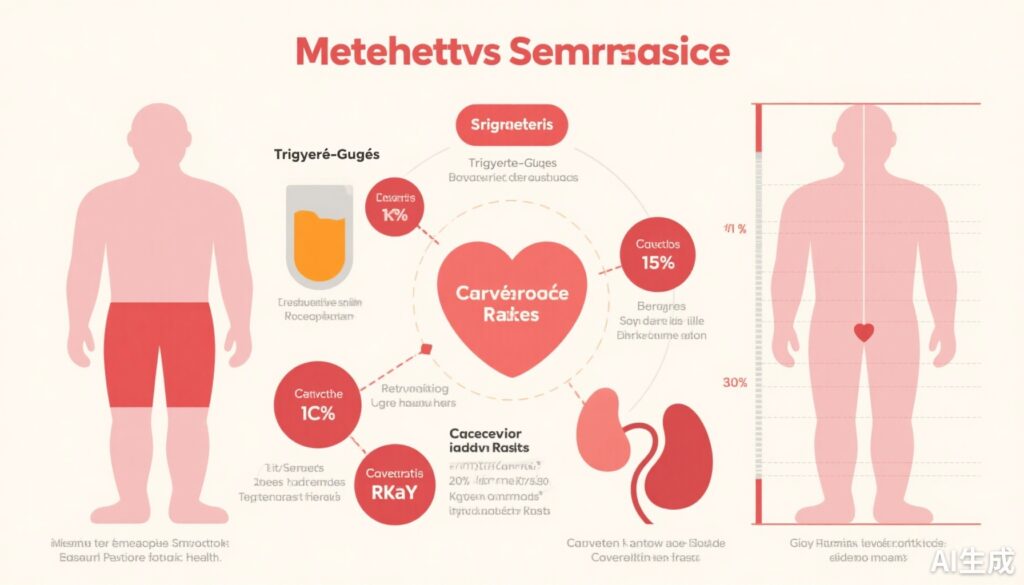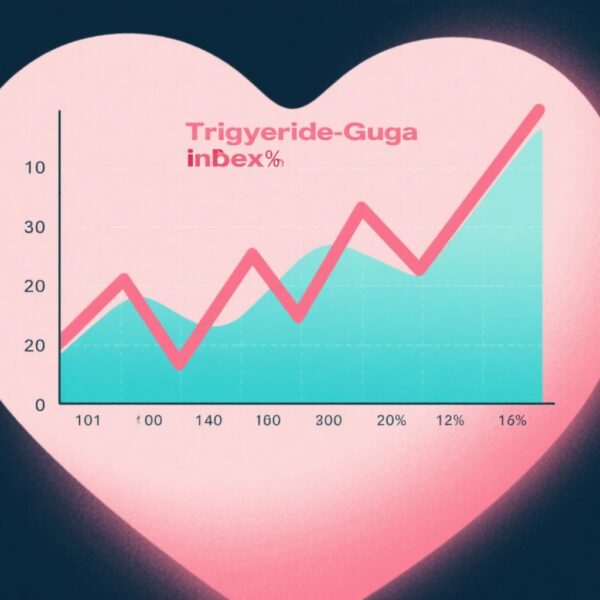Highlight
1. Elevated triglyceride-glucose (TyG) related indices combined with obesity metrics are robust predictors of cardiovascular disease (CVD) and mortality in CKM syndrome stages 0-3.
2. TyG indices integrated with body mass index (BMI), waist circumference (WC), and waist-to-height ratio (WHtR) outperform the TyG index alone in risk prediction.
3. Nonlinear associations characterize risk patterns for CVD incidence with TyG-BMI, TyG-WC, and TyG-WHtR, while cardiovascular mortality associations tend to be linear.
4. Incorporation of these indices substantially improves risk stratification according to net reclassification index, integrated discrimination improvement, and area under the curve metrics.
Background
Cardiovascular-kidney-metabolic (CKM) syndrome, recently outlined by the American Heart Association, represents a complex interplay of cardiovascular, renal, and metabolic disorders that collectively heighten the risk of adverse health outcomes including cardiovascular disease and mortality. Early and accurate risk stratification remains a clinical priority to guide preventive and therapeutic interventions. While triglyceride-glucose (TyG) related indices have emerged as markers of insulin resistance and predictors of cardiovascular risk, their role specifically in CKM syndrome has not been extensively elucidated. This knowledge gap limits the tailored management strategies for individuals at varied stages of CKM syndrome.
Study Design
This prospective cohort study analyzed data from 282,920 participants enrolled in the UK Biobank, all classified within stages 0 to 3 of CKM syndrome and free of baseline cardiovascular disease. Four TyG-related indices were assessed: the TyG index, TyG adjusted by body mass index (TyG-BMI), TyG adjusted by waist circumference (TyG-WC), and TyG adjusted by waist-to-height ratio (TyG-WHtR). The primary endpoints included incidence of overall CVD, coronary heart disease (CHD), stroke, all-cause mortality, and cardiovascular mortality, identified via electronic health records and death registries over a median follow-up of 13.6 years. Cox proportional hazards models estimated hazard ratios (HRs), with restricted cubic spline models exploring risk nonlinearities. Incremental predictive performance of TyG-related indices beyond traditional risk factors was evaluated using net reclassification index (NRI), integrated discrimination improvement (IDI), and area under the curve (AUC) analysis.
Key Findings
Throughout the extended follow-up, there were 27,134 incident CVD cases, including 21,658 CHD and 6,717 strokes, alongside 19,381 all-cause deaths and 3,466 cardiovascular deaths. Participants in the highest quartile of the TyG index had a 30% increased risk of overall CVD compared to the lowest quartile (HR 1.30, 95% CI 1.25–1.35). Stronger associations were observed with TyG-BMI (HR 1.49, 95% CI 1.43–1.55), TyG-WC (HR 1.58, 95% CI 1.51–1.65), and TyG-WHtR (HR 1.58, 95% CI 1.51–1.65).
Regarding all-cause mortality, adjusted HRs for the highest versus lowest quartile were 1.11 (95% CI 1.06–1.16) for TyG-BMI, 1.24 (95% CI 1.18–1.31) for TyG-WC, and 1.18 (95% CI 1.13–1.24) for TyG-WHtR. Cardiovascular mortality displayed similar increased risks: TyG-BMI (HR 1.42, 95% CI 1.27–1.59), TyG-WC (HR 1.51, 95% CI 1.33–1.72), and TyG-WHtR (HR 1.48, 95% CI 1.31–1.67).
Restricted cubic spline analyses revealed statistically significant nonlinear relationships between all TyG-related indices except for the TyG index itself and overall CVD risk (all P for nonlinearity < 0.05), indicating threshold or saturation effects in risk elevation. Cardiovascular mortality risk associations were predominantly linear across the spectrum of TyG indices.
Importantly, when comparing the predictive capacity of these indices, those combining TyG with obesity measures—TyG-WHtR, TyG-WC, and TyG-BMI—exhibited significantly superior performance in NRI, IDI, and AUC analyses relative to TyG alone, underscoring the merit of integrating adiposity metrics with metabolic dysfunction markers in risk models for CKM syndrome patients.
Expert Commentary
This study provides compelling evidence that adiposity-modulated TyG indices offer enhanced prognostic insight beyond traditional TyG measurements in the context of CKM syndrome. The large sample size and long follow-up duration lend robustness to the findings. By delineating nonlinearity in risk associations, the authors suggest potential pathophysiological thresholds at which triglyceride-glucose perturbations in synergy with body fat distribution markedly increase cardiovascular risk. The stronger predictive value of indices incorporating waist measures may reflect the recognized significance of central obesity in metabolic and vascular pathology.
Nevertheless, this observational study is limited by residual confounding and the absence of mechanistic biomarkers that could elucidate underlying pathways. The heterogeneity of CKM syndrome stages also invites future stratified analyses to refine applicability across subgroups. Further research should explore whether lifestyle or pharmacologic interventions targeting TyG-related metabolic derangements translate into improved clinical outcomes.
Conclusion
Higher triglyceride-glucose-related indices combined with obesity parameters — particularly TyG-BMI, TyG-WC, and TyG-WHtR — are independently associated with increased risk of cardiovascular events and mortality among individuals with CKM syndrome stages 0-3. These findings advocate for the integration of metabolic and adiposity markers in cardiovascular risk stratification frameworks for patients with overlapping cardiovascular, renal, and metabolic disorders. Such an approach may refine prognostication and ultimately guide personalized preventive strategies in this high-risk population.
Funding and Registration
No specific funding sources were disclosed for this study. The analysis utilized data from the UK Biobank cohort (approved protocols and registrations apply).
References
1. Liu K, Hu J, Huang Y, He D, Zhang J. Triglyceride-glucose-related indices and risk of cardiovascular disease and mortality in individuals with cardiovascular-kidney-metabolic (CKM) syndrome stages 0-3: a prospective cohort study of 282,920 participants in the UK Biobank. Cardiovasc Diabetol. 2025 Jul 10;24(1):277. doi: 10.1186/s12933-025-02842-1. PMID: 40640813; PMCID: PMC12243434.


